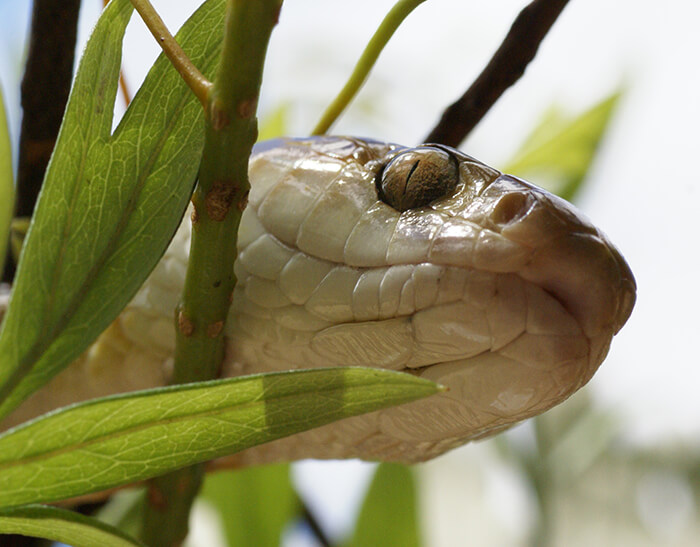Introduction
Tiger serpents are amongst the most widely known and been afraid reptiles in Australia, extensively identified for their striking appearance and powerful venom. This post aims to delve into the complexities of the tiger snake's environment, distribution, behavior, and what one can expect when running into these interesting creatures. By recognizing where to locate them and just how to navigate potential threats, you can value their function in the ecological community while ensuring your safety and security.
Tiger Snake Habitat: Where to Find Them and What to Expect
Tiger serpents are primarily discovered in southeastern Australia, including Tasmania, where they prosper in a variety of environments. Their versatility permits them to populate diverse surfaces such as seaside areas, wetlands, meadows, and even metropolitan locations.
Geographical Distribution of Tiger Snakes
The geographical reach of tiger serpents prolongs throughout a number of Australian states. They are especially typical in:
- Tasmania: The Tasmanian tiger serpent is among the most recognized subspecies. Victoria: Located near water bodies like rivers and lakes. New South Wales: Choosing bushland locations near water sources. Western Australia: More generally seen around swamps and estuaries.
Understanding the geographical circulation is essential for both conservation efforts and public understanding regarding encounters with these snakes.
Preferred Environments of Tiger Snakes
Tiger serpents prosper in different habitats. Below are some normal settings where they might be discovered:
Wetlands: They like marshy or swampy areas where they can access victim easily. Coastal Regions: Near beaches or rough shorelines offer abundant food sources like fish and amphibians. Forested Areas: Dense thicket offers sanctuary from predators while providing searching grounds.Behavioral Patterns Associated with Habitat
Understanding tiger snake habits within their environments is essential for interaction management:
- Nocturnal Activity: Tiger serpents tend to be extra active during golden hours (sundown and dawn), making them harder to find during daytime. Territorial Nature: They display territorial behavior; hence, it's critical to appreciate their room if encountered.
This understanding can help alleviate unwanted interactions between humans and tiger snakes.
Are Tiger Snakes Venomous?
Yes, tiger snakes are indeed venomous. Their venom contains neurotoxins that can trigger paralysis or even fatality if untreated.
What Makes Their Poison Dangerous?
The potency of a tiger snake's venom varies depending upon a number of elements:
- Geographic location Individual health Quantity infused throughout a bite
Symptoms of a Tiger Serpent Bite
Recognizing symptoms early is crucial:
- Pain at the bite site Swelling Difficulty breathing
Immediate clinical interest is important if bitten.
First Help for Snake Bites
Knowing first aid treatments can be lifesaving in instance of a snake bite.
First Aid Tips for Serpent Bites
Stay tranquility; keep the damaged area still. Call emergency situation solutions immediately. Apply a stress bandage over the bite site. Keep the private lying down until assistance arrives.Following these actions can substantially boost results following a serpent encounter.
Where Else Can You Encounter Tiger Snakes?
While they're commonly located in their all-natural environments, urbanization has actually led to raised experiences with humans.
Urban Encounters
Tiger snakes may venture right into gardens or parks searching for food or water sources.
Precautions When Hiking or Exploring
When checking out areas known for tiger serpent habitats:
types of brown snakes - Skill's Training College- Wear thick boots Stay on paths Be vigilant
Taking these precautions will assist reduce risks while you appreciate nature.

Baby Tiger Snakes: A Distinct Perspective on Growth
Just like grownups, baby tiger serpents are born poisonous but smaller in dimension.
Characteristics of Baby Tiger Snakes
- Size: Commonly around 20-- 30 centimeters when born. Appearance: Sporting activity similar coloration as grownups however may have lighter bands initially.
Understanding their advancement aids in appreciating their eco-friendly duty from infancy onward.
FAQs about Tiger Snakes
1. Are all tiger snakes venomous?
Yes, all varieties of tiger snakes possess venom capable of triggering serious harm.
2. Just how can I determine a tiger snake?
Look for unique banding patterns varying from yellowish-brown to blackish shades along their bodies; grownups usually https://skillstrainingcollege.com.au/venomous-snakebite-treatment/ expand in between 1-- 2 meters long.
3. What should I do if attacked by a tiger snake?
Seek instant clinical interest; use first aid measures as reviewed earlier while maintaining calm.

4. Do child tiger serpents pose any kind of danger?
Absolutely! In spite of their little dimension, infant tiger serpents are still venomous and can supply attacks that need significant clinical attention.

5. Are there any type of particular environments I should avoid?
Avoid walking through thick underbrush or near stationary water where problems prefer serpent visibility during warmer months.
6. Exactly how do conservation initiatives affect tiger snake populations?
Conservation efforts focus on habitat preservation which directly affects population stability by making certain adequate food resources and secure breeding locations.
Conclusion
In summary, rough scaled snake comprehending "Tiger Snake Environment: Where to Find Them and What to Anticipate" not only enriches our expertise about these remarkable reptiles however also improves our capacity to coexist safely with them in shared settings. From recognizing their chosen habitats to understanding how to respond efficiently if bitten, thorough knowledge encourages all of us-- whether we're wild animals fanatics or casual walkers-- to appreciate this interesting facet of Australia's natural heritage while prioritizing our safety.
This write-up acts as a comprehensive overview on whatever related to tiger snake environments! Whether you're a passionate explorer or somebody looking simply for details concerning these animals, understanding exactly how they interact within their ecological communities-- and exactly how we suit that picture-- is crucial!